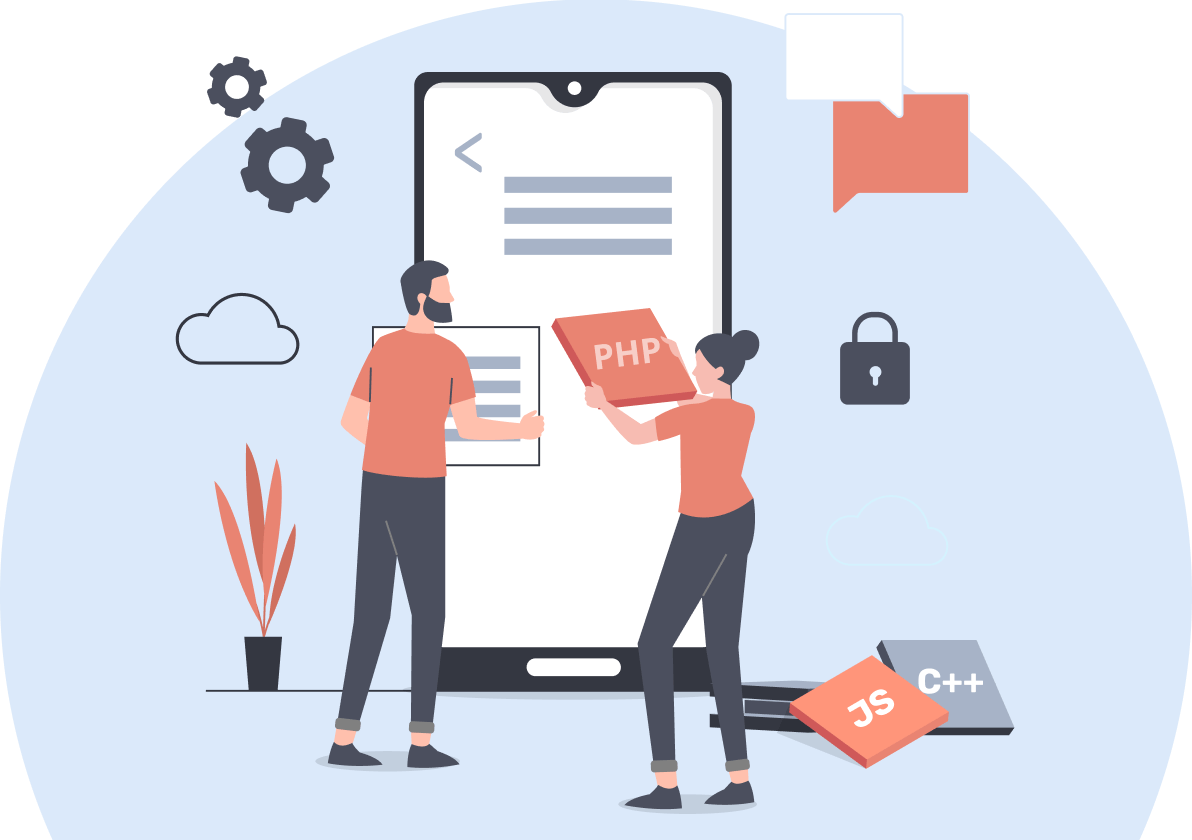5 mins read

A good idea is often the starting point, but there are more steps between an initial sketch and a working app than many people realise. From choosing a platform and identifying your target audience to design and revenue models: each aspect requires thoughtful decisions. Taking these into account from the start increases your chances of developing a successful app that not only works, but also generates value.
There are many tools and platforms available to help you build an app yourself. Think of no-code builders and visual editors that require no programming knowledge. These often work well for simple applications or a first concept. However, once you want more than basic functionality, you may quickly run into limitations, such as limited scalability or dependency on external systems. If your idea has growth potential, it’s wiser to outsource the development. Want to have an app created and understand what’s involved? Below, we walk you through the process step by step.
Building an app starts with the “why”. What do you want to achieve, and for whom are you developing the app? An internal app for employees requires something very different than a consumer-facing app in the App Store. Being clear about purpose and audience lays a strong foundation for all subsequent steps.
Which features are essential for your app, and which are “nice to have”? Think about logins, push notifications, integrations with existing systems or payment options. Distinguish between a minimum viable product (MVP) and future expansions. This helps keep the scope manageable and the budget under control.
A good design is crucial for your app’s success. It ensures users quickly understand how everything works and continue to enjoy using it. It’s not just about how the app looks, but especially how logical and user-friendly it is. When visual design and usability are well aligned, you get an app that feels professional, is used more often, and is rated more positively. A well-thought-out design increases user satisfaction and helps you reach your goals faster.
In addition to the platform, the method used to develop the app is also important. There are three commonly used technologies:
Native apps: specifically developed for one platform, offering maximum performance and full access to device functionalities.
Hybrid apps: built with one codebase for multiple platforms. This saves time and budget but may compromise on user experience or design.
Web apps: accessed via a browser and not downloaded through an app store. They are low-threshold and compatible with all browsers.
The right technology depends on your needs regarding functionality, user experience, maintenance and further development. Learn more about the various technologies: web, native, PWA, or Flutter.
When developing an app, it’s important to determine which operating system it will run on. Will you choose iOS, Android or both? The decision depends on your target audience, their location, and the type of devices they use. For instance, iOS is often popular among business users in the US and Scandinavia, while Android holds the largest market share globally. Based on these insights, we advise on the platform that best suits your goals. Want to know more about the specific options? See what's involved in creating an iOS app or an Android app.
How much does it cost to build an app? The answer depends on several factors, such as the app’s complexity, the number of features, the chosen platform, and the development process. Without a clear overview, it’s difficult to make a realistic estimate. Want to know what costs to expect and what to consider? Read more on our page about costs of creating an app.
Developing an app takes time and money. How will you earn that back? Consider paid downloads, subscriptions, advertisements or in-app purchases. Some apps pay for themselves indirectly through process optimisation or customer loyalty. Need inspiration? Read more about potential models to make money with apps.
Before going live, it’s important to test thoroughly – not just technically, but also for usability. Think of beta tests with a group from your target audience. Gather feedback, make improvements where necessary, and plan a phased launch. This way, you ensure your app not only works well but is also well received.
The real work begins after the launch. Without visibility in the app stores, downloads will remain limited. App Store Optimisation (ASO) is essential for being found in the Apple App Store and Google Play Store. Think of the right title, keywords, screenshots and reviews. Technical maintenance is also required to keep up with OS updates, fix bugs and ensure security. Ongoing development plays a major role too: user feedback and data analysis often lead to insights that result in improvements or new features. A successful app is never truly finished.
Building an app yourself is achievable, but for a scalable and future-proof product, a professional approach is essential. By making the right decisions early on regarding platform, functionality, design, and revenue model, you can avoid unnecessary mistakes and costs. Want to discuss your idea or explore the possibilities? We’re happy to help.
